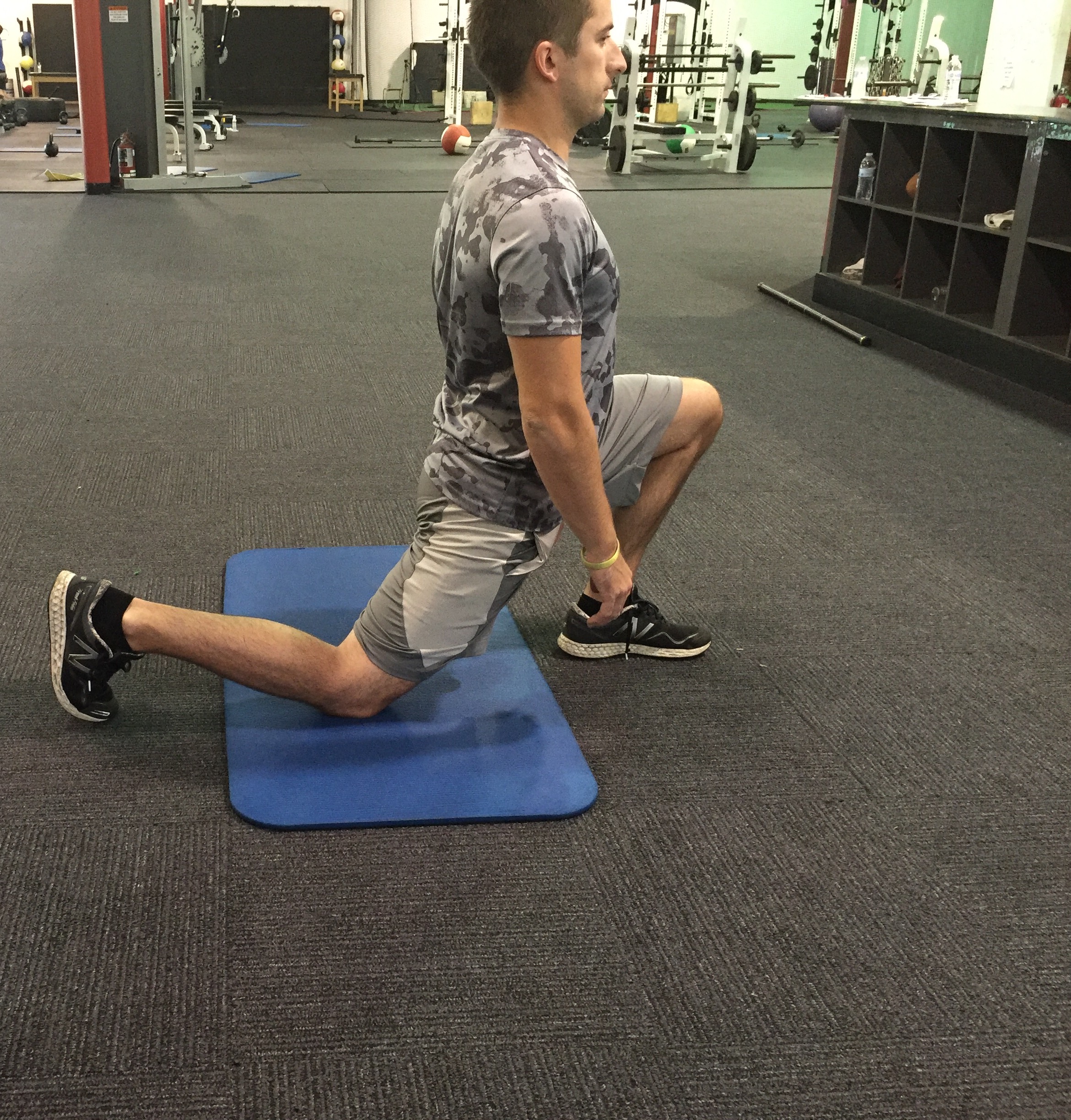3 Tips To Improve Your Hip Flexor Stretch
Stretching and mobility drills can be an important part of any rehab or strength and conditioning program. When coupled with motor control drills and good old fashioned strength and conditioning, it can very effective for the athlete or client.
One common stretch that is performed by many is the hip flexor stretch. Whether performed in standing or half kneeling, many people will stretch their hip flexors because they want to improve their hip flexor mobility or are experiencing tightness in this area.
Try the Thomas Test
To know if you truly have limited hip extension mobility/limited hip flexor mobility, try the Thomas Test.
Normal:
-
Thigh reaches the table
-
Knee is bent to 90 degrees.
-
Knee is in line with the hip.
If any of these previous points aren’t present and the thigh cannot reach the table, the knee is not bent to 90 degrees, and/or the knee is not in line with the hip, then you most likely have limited hip flexor mobility.
For the brevity of this post, we will be addressing the half kneeling hip flexor stretch for the Iliacus and Psoas Major/Minor.

Commonly, this is how the half kneeling hip flexor stretch is performed.
.jpeg)
Most people will feel a stretch in their hip flexors during this particular stretch/position, but it not ideal. It is not ideal because you are most likely stretching more than just your hip flexors.
You are stretching ligaments and capsular tissue in the hip joint itself and in most cases, this is not something we want to be stretching. Also, performing the hip flexor stretch like so is not the most effective use of your time and effort.
3 Ways to Improve Hip Flexor Stretch
Here are 3 Ways to Improve Your Hip Flexor Stretch
Tip #1: “Tuck Your Tailbone” or “Bring Your Belt To Your Chin”
This is a great cue that I use with people to make sure they are feeling a true hip flexor stretch.
Key Points:
-
Make sure ear, shoulder, hip, knee are all stacked on top of each other in a straight line.
-
“Tuck your tailbone” or ”bring your belt to your chin”.
-
Stretch should be felt in the front of the hip.
By performing this cue, you are posteriorly tilting your pelvis or tilting it backwards and working on muscular mobility versus stressing joint structures as shown above.
Tip #2: “Press Down Into Your Knee”
Another tip I like to use is if someone can’t feel a stretch with the tip from above where they tuck their tailbone or bring their belt towards their chin, I instruct them to push down into their front knee. By doing this, you are activating the anterior core musculature. These muscles attach to the pelvis and have a direct relationship to the pelvic position as well as feeling a hip flexor stretch.
Key Points:
-
Make sure to stack ear, shoulder, hip, and knee on top of each other.
-
Take both hands and press down into the front knee.
-
Stretch should be felt in the front of the down leg hip.
By activating the anterior core musculature, this can assist in posteriorly tilting the pelvis as attempting to do in tip #1. This tip can also help those who don’t feel a stretch with tucking their tailbone or bringing their belt to their chin.
Tip #3: “Press Down Into The Knee and Reach for the Sky.”
This last tip is for those who have difficulty feeling a stretch with the previous 2 suggestions.
Key Points:
-
Make sure to stack ear, shoulder, hip, and knee on top of each other.
-
Press down into the front knee with up leg arm.
-
With down leg arm, reach for the sky.
By piggybacking on tip #2, reach for the sky with the down leg arm. By performing tip #2 and combining it with the reach, it can help some people feel a better stretch. By reaching with the arm, it can help to improve the stretch/effectiveness of the drill by working on mobility in the deep and spiral lines of the body's fascial system.
Without going into too much detail, as coined by Thomas Meyers of Anatomy Trains, there are lines or “trains” throughout the body of tissue that connects muscles in different areas. By incorporating the reach with this stretch, it can improve the stretch by placing tension through the shoulder and in turn at the hip.
If you have trouble feeling a good hip flexor stretch or just want to improve how you’re doing it, try “tucking your tailbone”, “bringing your belt toward your chin”, activating the anterior core musculature, or incorporating a reach with your stretch.
Related blog: hip flexor tightness or pain while squatting
Tags:

May 29, 2018


